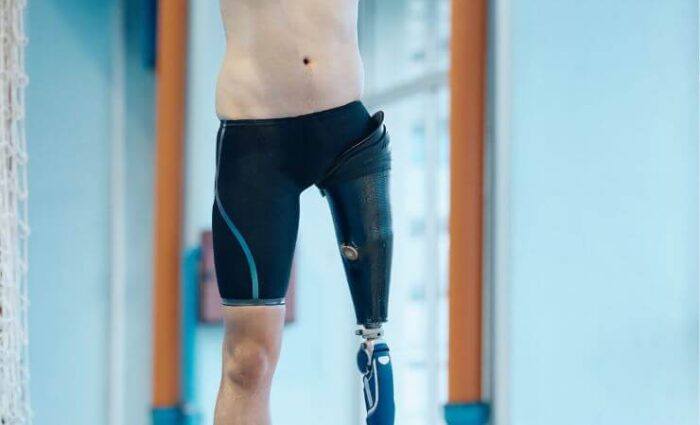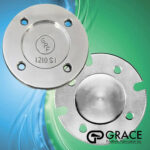Navigating the Waters of Comfort and Functionality
Are you an avid swimmer who also happens to be a prosthetic user? Or perhaps you’re new to the world of prosthetics and wondering how swimming fits into your lifestyle? No matter where you are in your journey, the idea of swimming in a prosthetic socket might seem daunting at first.
But fear not! With the right knowledge and tools, swimming with a prosthetic can be not only possible but also enjoyable too!
Understanding the Importance of Prosthetic Sockets
Prosthetic sockets are crucial components of any limb prosthetic. They provide the interface between the residual limb and the prosthetic device, ensuring a secure fit and proper weight distribution. However, when it comes to swimming, finding the right balance between a snug fit and comfort becomes even more critical.
Factors to Consider for Swimming with a Prosthetic Socket
Swimming in a prosthetic socket requires careful consideration of several factors, including socket fit, design, and material. A poorly fitting socket can lead to discomfort, skin breakdown, and even instability in the water. Therefore, it’s essential to ensure that your socket is tailored to your specific needs and preferences.
Customization with Adjustable Sockets
One solution to achieving a comfortable and secure fit while swimming is through adjustable sockets. These sockets allow for easy customization, enabling users to adjust the fit as needed to accommodate changes in limb volume or pressure distribution. By having control over the socket’s fit, swimmers can minimize the risk of skin breakdown and maximize their comfort in the water.
Tailoring Socket Design
Another crucial aspect to consider is the design of the prosthetic socket itself. Different socket shapes and sizes are available to accommodate various types of limb amputations and individual preferences. For example, upper limb sockets may differ significantly from lower limb sockets in terms of shape and functionality.
Additionally, specialized sockets for knee amputees may feature unique design elements to enhance stability and mobility while swimming.
Weight-Bearing and Pressure Distribution
When swimming with a prosthetic, it’s also essential to pay attention to weight-bearing and pressure distribution. A well-designed socket will evenly distribute pressure across the residual limb, minimizing discomfort and reducing the risk of injury. By ensuring proper weight bearing, swimmers can maintain stability and control in the water, allowing for a more enjoyable swimming experience.
Selecting the Right Materials
In addition to socket design, the choice of materials used in prosthetic components can also impact swimming performance. Lightweight and water-resistant materials are ideal for swimming, as they minimize drag and provide greater freedom of movement. By selecting the right materials for your prosthetic device, you can enhance your swimming abilities and overall comfort in the water.
Protecting the Skin
Swimming with a prosthetic socket poses unique challenges, including the risk of skin breakdown due to prolonged exposure to water and friction from the socket. Therefore, it’s essential to take preventive measures to protect the skin and maintain good hygiene while swimming with a prosthetic. This can include using waterproof prosthetic liners and sleeves, as well as applying waterproof sealants or adhesives to prevent water from seeping into the socket.
Choosing Specialized Prosthetic Components
Some prosthetic devices are specifically designed for water activities and feature waterproof materials and corrosion-resistant components. These specialized prosthetics are lightweight, durable, and can withstand the rigors of swimming, allowing users to move with ease and confidence in the water.
Maintenance and Inspection
Proper maintenance of prosthetic components is crucial for ensuring optimal performance and longevity. After swimming, it’s essential to thoroughly rinse off the prosthetic device with fresh water to remove any chlorine, salt, or other contaminants that may cause damage or corrosion. Regular inspection and servicing of prosthetic components by a qualified prosthetist are also essential for detecting any signs of wear or damage early on and addressing them promptly.
Contact Grace Prosthetic Fabrication for Prosthetic and Orthotic Design and Manufacturing
Swimming with a prosthetic socket is not without its challenges, but with proper preparation, maintenance, and precautions, it can be a rewarding and enjoyable experience. By prioritizing skin protection, selecting the right prosthetic components, and maintaining good prosthetic hygiene, users can swim with confidence and peace of mind, knowing that their prosthetic devices are up to the task. So, dive in, make a splash, and let the water be your playground as you embrace the freedom and joy of swimming with a prosthetic socket!
Contact Grace Prosthetic Fabrication for prosthetic socket manufacturing.






